A prospective comparison of short term results and functional recovery after laparoscopic subtotal colectomy and antiperistaltic cecorectal anastomosis with short colonic reservoir vs. long colonic reservoir
- PMID: 25887580
- PMCID: PMC4367911
- DOI: 10.1186/s12876-015-0257-7
A prospective comparison of short term results and functional recovery after laparoscopic subtotal colectomy and antiperistaltic cecorectal anastomosis with short colonic reservoir vs. long colonic reservoir
Abstract
Background: To observe and compare the short term results and functional recovery of laparoscopic subtotal colectomy with antiperistaltic cecorectal anastomosis (LSCACRA) in the treatment of Adult slow transit constipation (STC) with two different reservoir length: short colonic reservoir and long colonic reservoir.
Methods: All STC patients treated with LSCACRA between April 2007 and December 2011 at our institution were followed up. Patients with 2 cm to 3 cm ascending colon preserved above the ileocecal junction were designated as observation group, whereas those preserved by 10 cm to 15 cm were classified as control group. 41 cases in the observation group and 40 cases in the control group were enrolled. Preoperative and outcome parameters of patients were collected, including gender, age, body mass index, operative time , blood loss, first flatus time, hospital stay, postoperative complications, Wexner constipation scale(WCS), Wexner incontinence scale, gastrointestinal quality of life index(GIQLI), abdominal pain intensity scale(APIS), abdominal pain frequency scale(APFS) and abdominal bloating scale(ABS).
Results: Laparoscopic surgeries were successfully carried out for all patients, without any case transferred to laparotomy or death related to surgery. The operative time, blood loss, first flatus time, and days of hospital stay of the two groups did not show significant differences. We found no significant differences on complications (Clavien-Dindo grade > I) between the two groups. No patient exhibited anastomotic leak. No fecal incontinence occurred in both groups. On the 3(rd), 6(th) and 12(th) month after operation, the parameters of both groups significantly improved compared with the preoperative conditions (P < 0.05) except the APIS at 3(rd) and 6(th) month in control group. On the 3(rd), 6(th) and 12(th) month after operation, the Functional Recovery outcomes of WCS、GIQLI、APIS、APFS and ABS in the observation group were superior to those in the control group (P < 0.05).
Conclusion: LSCACRA has a significant effect in the treatment of STC in adult. Postoperative outcomes can be optimized by shortening the length of the preserved ascending colon above the ileocecal junction, which promise better life quality of patients.
Trial registration: Chinese Clinical Trial Registry ChiCTR-OPC-14005280, 2014-09-29.
Figures
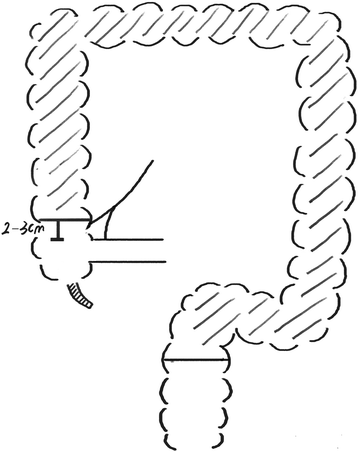
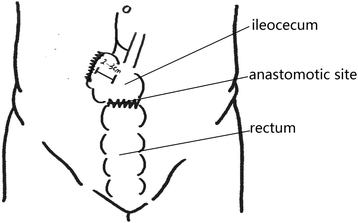

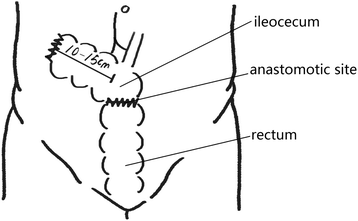
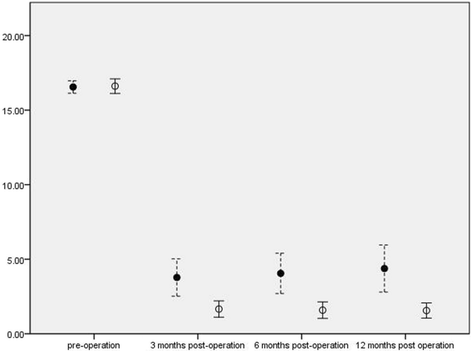
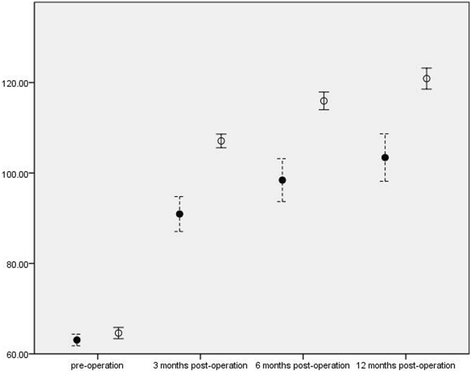
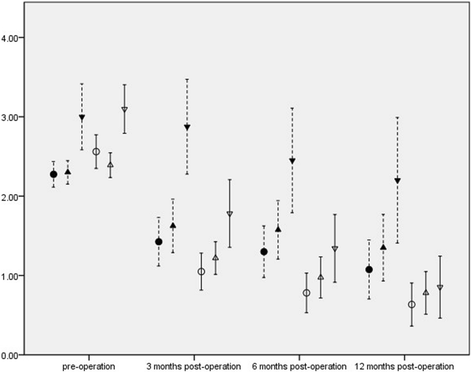
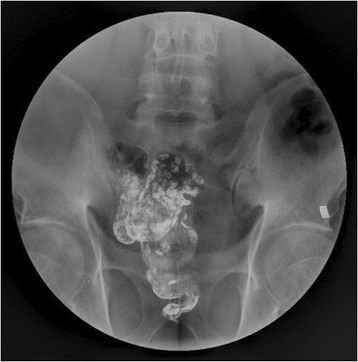
Similar articles
-
[Retrospective cohort study on subtotal colonic bypass plus colostomy with antiperistaltic cecoproctostomy in the treatment of senile slow transit constipation].Zhonghua Wei Chang Wai Ke Za Zhi. 2019 Apr 25;22(4):370-376. doi: 10.3760/cma.j.issn.1671-0274.2019.04.010. Zhonghua Wei Chang Wai Ke Za Zhi. 2019. PMID: 31054552 Chinese.
-
[Influence of length of preserved ileocecum on the efficacy of laparoscopic subtotal colectomy antiperistaltic cecorectal anastomosis in the treatment of slow transit constipation].Zhonghua Wei Chang Wai Ke Za Zhi. 2015 May;18(5):454-8. Zhonghua Wei Chang Wai Ke Za Zhi. 2015. PMID: 26013863 Chinese.
-
Subtotal colonic bypass plus colostomy with antiperistaltic cecoproctostomy for the treatment of slow transit constipation in an aged population: A retrospective control study.World J Gastroenterol. 2018 Jun 21;24(23):2491-2500. doi: 10.3748/wjg.v24.i23.2491. World J Gastroenterol. 2018. PMID: 29930470 Free PMC article.
-
[Subtotal colectomy with ceco-rectal anastomosis (Deloyers) for severe idiopathic constipation: an alternative to total colectomy reducing risks of digestive sequelae].Ann Chir. 1997;51(3):248-55. Ann Chir. 1997. PMID: 9297887 Review. French.
-
[Progress in the treatment of surgical procedures for slow transit constipation].Zhonghua Wei Chang Wai Ke Za Zhi. 2018 Mar 25;21(3):357-360. Zhonghua Wei Chang Wai Ke Za Zhi. 2018. PMID: 29577225 Review. Chinese.
Cited by
-
Defecation function and quality of life in patients with slow-transit constipation after colectomy.World J Clin Cases. 2020 May 26;8(10):1897-1907. doi: 10.12998/wjcc.v8.i10.1897. World J Clin Cases. 2020. PMID: 32518779 Free PMC article.
-
Medical Adhesives and Their Role in Laparoscopic Surgery-A Review of Literature.Materials (Basel). 2022 Jul 28;15(15):5215. doi: 10.3390/ma15155215. Materials (Basel). 2022. PMID: 35955150 Free PMC article. Review.
-
Tools for fecal incontinence assessment: lessons for inflammatory bowel disease trials based on a systematic review.United European Gastroenterol J. 2020 Oct;8(8):886-922. doi: 10.1177/2050640620943699. Epub 2020 Jul 17. United European Gastroenterol J. 2020. PMID: 32677555 Free PMC article.
-
Extended Colectomy Followed by Cecorectal Anastomosis as a Surgical Treatment Modality in Synchronous Colorectal Cancer.Case Rep Oncol. 2020 Jul 8;13(2):813-821. doi: 10.1159/000508266. eCollection 2020 May-Aug. Case Rep Oncol. 2020. PMID: 32884524 Free PMC article.
-
2022 Seoul Consensus on Clinical Practice Guidelines for Functional Constipation.J Neurogastroenterol Motil. 2023 Jul 30;29(3):271-305. doi: 10.5056/jnm23066. J Neurogastroenterol Motil. 2023. PMID: 37417257 Free PMC article. Review.
References
Publication types
MeSH terms
Associated data
LinkOut - more resources
Full Text Sources
Other Literature Sources
Medical
Miscellaneous

